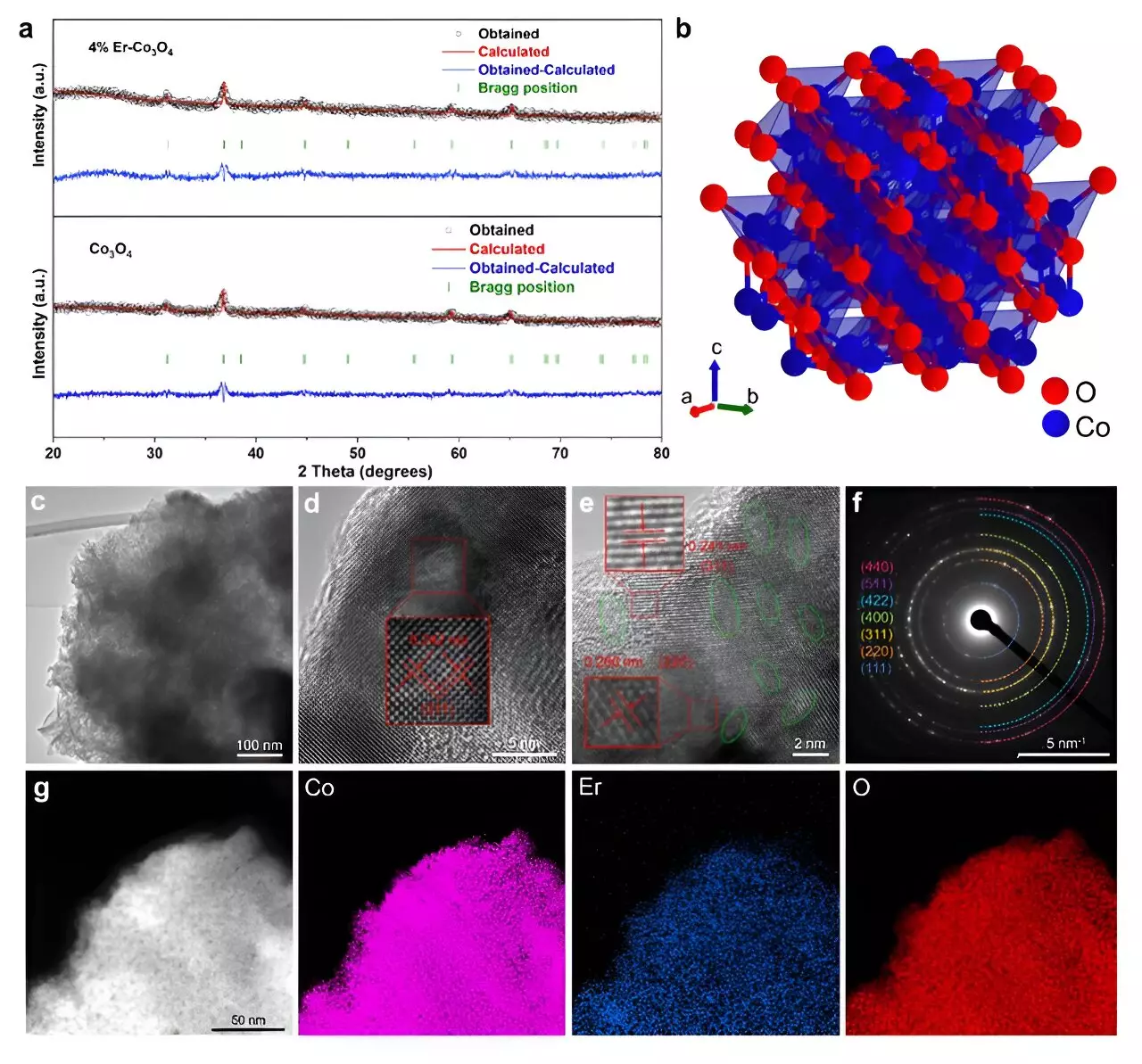The pursuit of efficient and stable catalysts for oxygen evolution reactions (OER) represents a pinnacle challenge in the quest for sustainable energy solutions. In a remarkable development, a team of researchers has unveiled an innovative electrocatalyst that significantly elevates the efficiency of OER in acidic conditions. By integrating erbium (Er), a rare earth element, into cobalt oxide (Co3O4), they have engineered a novel catalyst that not only demonstrates superior performance compared to conventional catalysts but also offers a cost-effective alternative to precious metal-based options.
Oxygen evolution reactions are vital components in processes such as water splitting and energy conversion technologies. Catalysts must endure tough conditions while maintaining high activity levels to facilitate these reactions. Historically, cobalt-based catalysts provided moderate performance levels, attributed to their inherent spinel crystal structure which, while stable, lacked the full potential needed for efficient OER. The introduction of erbium into this mix marks a noteworthy shift, enhancing both the robustness and effectiveness of the Co3O4 structure.
In a study published in ACS Catalysis, which garnered the Editors’ Choice label, the researchers provided solid evidence for their claims. The newly formed 4% Er-doped Co3O4 catalyst achieved an impressive overpotential of merely 321 mV at a current density of 10 mA cm². This performance is particularly striking, especially when contrasted with iridium-based catalysts that come at a significantly higher cost. The extended stability of this catalyst—lasting over 250 hours—offers a glimpse into its commercial viability and practicality for real-world applications.
To dissect the success of the erbium-doped catalyst, the researchers employed an array of advanced analytical techniques, including microkinetic modeling and density functional theory (DFT) calculations. These methods enabled them to unveil the underlying reasons for the catalyst’s enhanced performance. The incorporation of erbium facilitated the formation of active sites and introduced defects within the Co3O4 crystal structure, which ultimately elevated the ratio of Co3+ to Co2+ ions. This critical transformation was instrumental in creating oxygen vacancies plentiful enough to expedite the OER.
Hao Li, an associate professor and co-author of the study, drew a vivid analogy comparing the catalyst’s action to a multi-lane highway. The doping of erbium effectively adds additional lanes, thereby allowing for smoother passage of traffic—in this case, the oxygen intermediates necessary for the reaction. The abundance of oxygen vacancies serves like these extra lanes, enhancing the speed and efficiency at which the reaction can proceed. This clarity in explanation underscores the interplay between structure and function in catalysis.
Recent investigative techniques, particularly in situ Raman spectroscopy, have provided further insights into the placement of oxygen vacancies within the octahedral sites of the Co3O4 structure. Such vacancies are crucial for developing intermediate species that play vital roles in facilitating the OER process. The enhanced ratio of Co3+/Co2+ plays a significant part in ensuring that these intermediates find suitable anchoring on the catalyst surface, promoting extensive catalytic activity.
The implications of this research are profound and herald new possibilities for future catalyst design initiatives. The collaborative work of the research team signals a shift towards creating non-precious metal catalysts that uphold performance while remaining economically viable and environmentally friendly. This innovation paves the way for researchers and engineers to explore alternatives that can further drive the evolution of clean energy technologies.
In sum, the introduction of erbium-doped cobalt oxide as a catalyst for oxygen evolution reactions represents a pivotal advancement in electrocatalysis. By achieving notable efficiency and stability in harsh acidic environments, this innovative approach not only challenges the status quo but opens doors for sustainable energy solutions that do not rely on scarce and costly materials. As research efforts continue to focus on catalytic performance enhancements, the promise of this breakthrough could transform future energy systems.


Leave a Reply